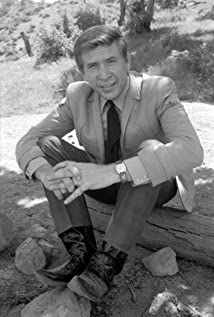Buck Owens is a true legend in country music. Along with fellow performers Merle Haggard and Wynn Stewart, Buck helped popularize the Bakersfield Sound, or honky-tonk infused with electric instrumentation and rock influences. Growing up in Arizona, Buck picked cotton and learned to play the mandolin, the guitar and horns. He had his first radio pro...
Show more »
Buck Owens is a true legend in country music. Along with fellow performers Merle Haggard and Wynn Stewart, Buck helped popularize the Bakersfield Sound, or honky-tonk infused with electric instrumentation and rock influences. Growing up in Arizona, Buck picked cotton and learned to play the mandolin, the guitar and horns. He had his first radio program at age 16 and a year later, worked with the Mac's Skillet Lickers, whose lead singer was Bonnie Campbell. Bonnie soon became the first Mrs. Buck Owens; together, they had a son, Buddy. Buck and his young family moved to Bakersfield, California, in the early 1950s, where he worked as a session guitarist and played for a band called the Orange Blossom Playboys. After a few years of recording rockabilly songs (as "Corky Jones"), Buck signed a contract with Capitol Records in 1957. His first recordings floundered, and it wasn't until the spring of 1959 when he hit with "Second Fiddle." That song only reached No. 24 on Billboard magazine's country singles chart, but it was the follow-up, "Under Your Spell Again" (which reached No. 4 in the fall of 1959) that Buck's future in country music was assured--and was it ever. After several top-five songs that flirted with the No. 1 spot (among them, "Above and Beyond," "Under the Influence of Love" and "Foolin' Around"), he finally hit the top of the charts in June 1963 with "Act Naturally." That song's four-week stay at No. 1 paled in comparison, though, to his incredible 16-week stay that fall with "Love's Gonna Live Here." Eighteen more No. 1 hits, all in the Bakersfield tradition, followed during the next nine years. Many of them featured Buck's chief guitarist, right-hand man and close confidant, Don Rich. Together, Owens and Rich (the leader of Buck's backing band, the Buckaroos) polished their sound, which graced AM radio throughout the 1960s and early 1970s. Buck parlayed his popularity on two country music TV shows: the syndicated "Buck Owens Ranch Show" and CBS' (and later syndicated) Hee Haw (1969). Through it all, he was an astute businessman, keeping control of his publishing rights and master tapes, purchasing several radio stations and forming a booking agency among them. He also recorded a live album in 1969 in London. Then, in 1974, Rich was killed in a motorcycle accident and Buck's life faltered. He recorded for Warner Bros. for a time in the mid- to late-1970s, but only one song, 1979's "Play Together Again, Again" (a duet with Emmylou Harris) was a substantial hit. Then, in 1988, he found renewed popularity when new country star Dwight Yoakam (whose own Bakersfield Sound was strongly influenced by Owens) asked him to duet on "Streets of Bakersfield," which soared to No. 1. He still performs occasional shows at his Crystal Palace, and was inducted into the Country Music Hall of Fame in 1996. Buck Owens remains one of country music's most respected (if not underrated) legends.
Show less «



